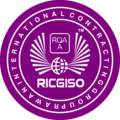What is ISO 3632-1:2011?
This part of ISO 3632 establishes specifications for dried saffron obtained from the pistils of Crocus sativus L. flowers. It applies to saffron in both of the following forms: a) filaments and cut filaments; b) powder.
Standardization of saffron
QUALITY CONTROL AND STANDARDIZATION
The intensive labor and small quantity of product resulting from that drudgery makes the saffron industry susceptible to fraud. Saffron scams in the past led to the formation of the Safranschou Code which punished the double-dealers with penalties, incarceration and execution. But through the years, the trade became lenient and scams persisted. Coupé saffron stigmas may be mixed with low quality threads, or with filaments from other plants. Saffron powder may be mixed with turmeric and other similar-looking spices. These are illegal activities that compromise the consumers and the saffron industry in general.
Modern day security measures come in the form of the ISO, or the International Standards Organization, which laid down a uniform grading system for both the saffron filaments and saffron powder. The ISO/TS 3632, created especially for the saffron industry, was released in 1980, adjusted on a regular basis, with the latest version released in 2011. This standard inspects the authenticity and quality of the saffron products based on categories, and checks their labeling and packaging as well. The market price of saffron products is dependent on the results of such inspection.
Saffron sample grading depends on laboratory standards set for color, flavor and aroma, which means testing the major components croc in, picrocrocin and safranal through photo spectroscopy. They must surpass a given ceiling in order to be considered even at the lowest or poorest category. Cronin, in particular, is the primary consideration because all other components are affected by its presence. Authentic saffron threads and powders are graded from I to IV, with I as the finest and IV the poorest. The following is the grading scale for croc in absorbance: Grade I: >190, Grade II: >150, Grade III: >110 and Grade IV: < 110.
In Spain, saffron is graded differently, not with ISO 3632, but the scale used is the same. The category labels are different, though: Coupe: >190, La Mancha: 180–190, Rio: 150-180, Standard: 110–150, and Sierra: < 110.
Iranian saffron is boasted to be of the best quality there is because of the favorable climate the crocus plants grow in and the advanced technology used in the drying process. For the Iranian traders, there is
only one grade for saffron:
Sargol. However different, the scales mean the same thing: the higher the figure, the higher the light absorbency, the higher the croc in content and the more intense the colorant. In short, the higher the quality.


